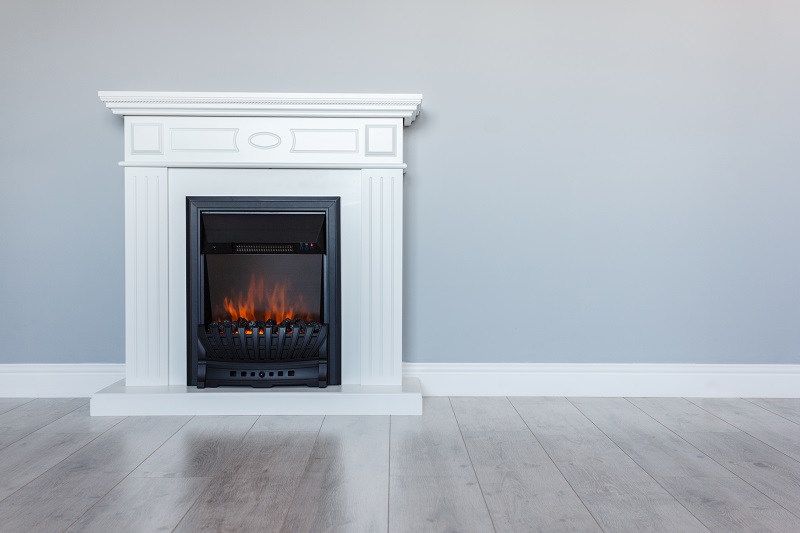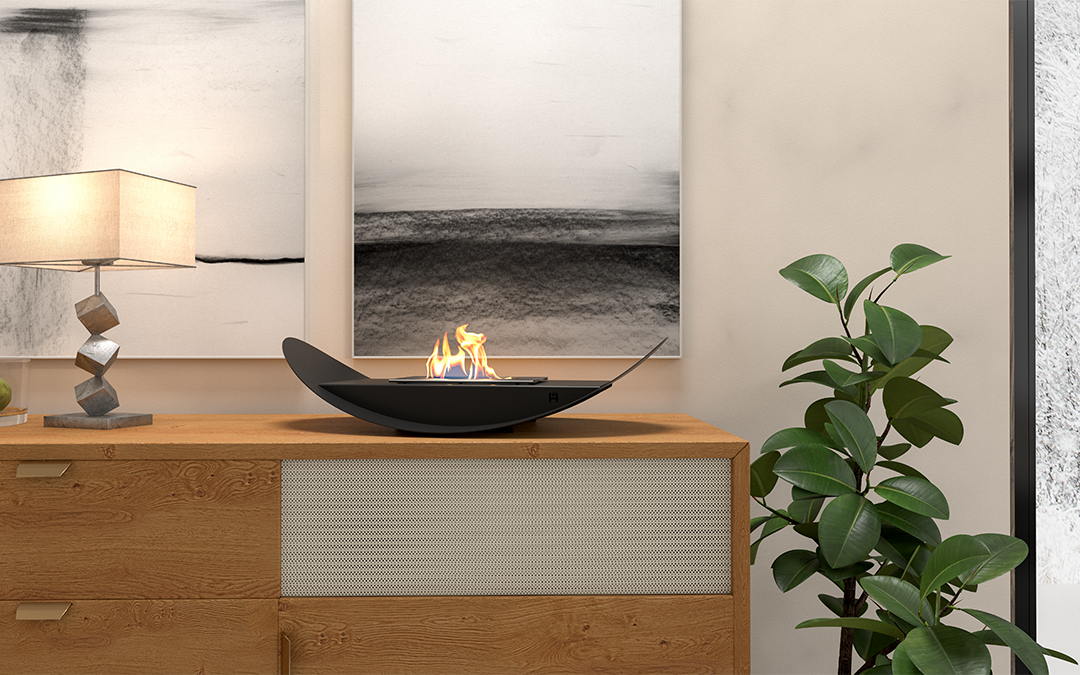Bio-fireplaces are an extremely stylish solution for interiors, which are gaining in popularity among lovers of unique design and a cosy atmosphere at home. However, the aesthetics of this type of equipment are not everything. Many people also pay attention to its functionality, wondering whether a bio-fireplace heats the room. We dispel all doubts! We describe how such devices work and how they influence the temperature in interiors. Find out if a bio-fireplace gives heat.

How do bio-fireplaces work?
Before even answering the question of whether a bio-fireplace heats, it is worth first understanding how it works. Modern models differ from traditional wood- or gas-burning fireplaces and electric heaters in many respects.
The most important difference is that they do not require a gas or electrical connection. Instead, they run on biofuel, which is usually in the form of an ethanol-based liquid or gel. The biofuel burns in the fireplace, producing flames that provide a source of light and heat.
This type of appliance also does not require a special flue system. It can therefore be installed not only in houses, but also in flats. Bio-fireplaces are often chosen for the atmosphere they provide in interiors. The flames produced look beautiful, becoming a perfect decorative element in any home or flat.
Bio-fireplace - does it heat the room?
The question of whether a bio-fireplace heats is often a source of controversy. The answer is yes, but to a limited extent. Such an appliance produces heat, but its efficiency in terms of space heating is inferior to traditional sources - such as gas fireplaces or wood-burning models.
However, this does not mean that it is not worth betting on a bio-fireplace in the colder seasons. Will it warm up the interior of a living room or study for work? Yes - it can raise the temperature in a room by several degrees.
The modern bio-fireplace - how much heat does it give?
We have already explained whether a bio-fireplace heats interiors. The question of the efficiency of such an appliance is also very often asked. How much heat a bio-fireplace gives depends on several factors. Firstly, the type and amount of biofuel used is of great importance. These vary in terms of their alcohol content and thus the energy they can generate. The size of the room in which the appliance will be placed and the quality of the building's thermal insulation are also important.
How much heat does a bio-fireplace give? Good models have a power output of 2-4 kW. This is more than a standard electric space heater generates. Bio-fireplaces are therefore able to generate enough heat to warm a small room such as a living room or bedroom, especially during transitional periods - autumn or early spring, when outdoor temperatures do not drop much below freezing.
Does the bio-fireplace heat when extinguished?
Wood-burning cookers often still give off heat a few hours after the flames are extinguished. Does a bio-fireplace heat in the same way? The ability to store heat depends on the materials of the specific model. Most popular bio-fireplaces have a chamber made of steel or glass. These are materials that do not have good heat storage properties.
If you want your bio-fireplace to give off heat when the flames go out, choose a ceramic or stone model. You can also buy ceramic logs to keep the temperature higher for longer.
When can a bio-fireplace be used for indoor heating?
You already know how much heat a bio-fireplace gives. Although it won't be the main heating element in your home, it can still be useful in many situations. It will work perfectly as a supplement to your existing heating system, especially in the transitional period when you don't need full heating power.
The bio-fireplace can also raise the temperature in rooms that do not have access to traditional heat sources. In addition, it is an excellent alternative to electric room heaters, having an important advantage over them - a unique design that makes the bio-fireplace a decoration of any interior.

